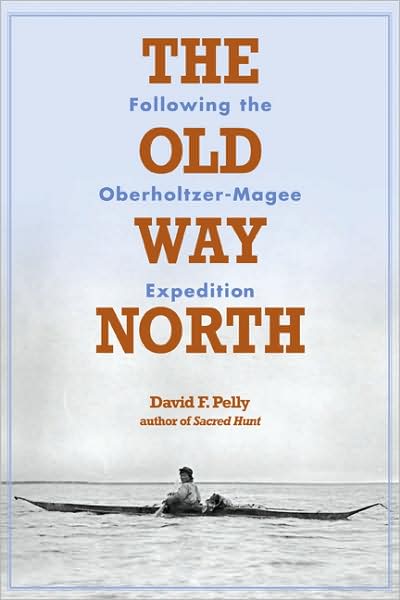Book Review: The Old Way North
16 Jun


Ernest Oberholtzer’s 1912 canoe journey from The Pas, Manitoba to Hudson’s Bay and back to civilization via the Lake Winnipeg railhead at Gimli has long fascinated expedition paddlers. Oberholtzer and his Anishinaabe paddling partner Billy Magee covered 2,000 miles – the remotest of them unexplored by non-natives – in 144 days on trail. The two scrambled back to the south with winter closing in on them.
Along with P.G. Downes’ trip into the same region two decades later, Oberholtzer and Magee’s expedition is the pioneering recreational canoe trip into the far north. The hundreds of paddlers who nowadays set off down the rivers of the boreal forest and the barrenlands each summer paddle in the wake of Oberholtzer and Downes, seeking many of the same experiences these predecessors did.
In his new book The Old Way North: Following the Oberholtzer-Magee Expedition David Pelly successfully puts the Oberholtzer-Magee trip into a historical, cultural, and geographical context. Pelly, a far northern paddler himself and the author of Thelon: A River Sanctuary and Sacred Hunt: A Portrait of the Relationship Between Seals and Inuit, brings the 1912 trip into a sharper focus and deeper context than any previous work.
Drawing on his own knowledge of the region and that of fellow paddlers Bill Layman and Lynda Holland, and quoting liberally from historical sources, Pelly puts the reader in Oberholtzer’s Chestnut canoe as he and Magee paddle along well-trodden historic fur trade routes, meet canoe- and boatmen plying the waters under human power, and encounter Cree, Dene, and Inuit residents on the land. The Old Way North works both for a reader encountering Ober, as he was known, for the first time or as a companion to the striking photo volume of the trip, Toward Magnetic North,or to Joe Paddock’s biography of Oberholtzer, Keeper of the Wild. Pelly follows the unlikely pair – Oberholtzer, a 28-year-old Harvard grad who would later emerge as an important wilderness advocate, Magee a 50-year-old trapper known as Taytahpahswaywetong in his own language – along their route, embellishing the often brief entries from Oberholtzer’s journal with contemporary descriptions and historical context.
When the paddlers visit the trading post and village at Lac du Brochet on Reindeer Lake, for example, the final outpost of western civilization before they would push on for the barrenlands, Pelly widens the lens of his narrative to encompass the early history of non-natives at that location. He remembers the early, semi-successful attempts by Catholic missionaries in the 1840s to court the Idthen-eldeli, as the Dene of the area called themselves, recounts how caribou meat the Idthen-eldeli could provide for the making of pemmican brought a Hudson’s Bay Company post into the region in 1859, and explains how the Idthen-eldeli chief Catjedeyaze bargained his religious affiliation for the construction of a Catholic mission (as opposed to an Anglican one) at Lac de Brochet in 1861.
Pelly’s rich contextualization, here and throughout the book, points up a shortcoming he sees in the original adventure: its lack of context. Oberholtzer was without a guide in the remote regions beyond Lac du Brochet and what he saw and photographed stayed at a distance from him for lack of interpretation. Oberoltzer had offered Alphonse Dzeylion of Lac du Brochet a dollar a day to guide Magee and him north. Dzeylion refused, according to Pelly, because the pay was less than half of what he could have earned working on a York boat. Had Ober found a way to hire Dzeylion, the encounters he had with Dene around Nueltin Lake – including what was likely a meeting with renowned Dene Chief Casimir — would have been infinitely richer.
A few aspects of The Old Way North can frustrate readers. The book lacks reference notes other than a “Selected Bibliography” which doesn’t include all the resources Pelly cites. For the reader eager to dig into the primary sources of the book, the shortcoming is bothersome. Also, Pelly’s description of Oberholtzer and Downes’ route onto the barrenlands as “the old way north,” on par with historic Northwest Passage and MacKenzie River routes, seems forced.
For a reader/paddler eager to re-live the Oberoltzer-Magee trip, though, or one looking to deepen their knowledge about northern routes they themselves have paddled, or hope someday to explore, the book is a great read. Pelly brings Oberholtzer’s wilderness alive in a way that not even Ober and Magee were able to experience.
Every great trip – and every remote region – deserves such treatment.










